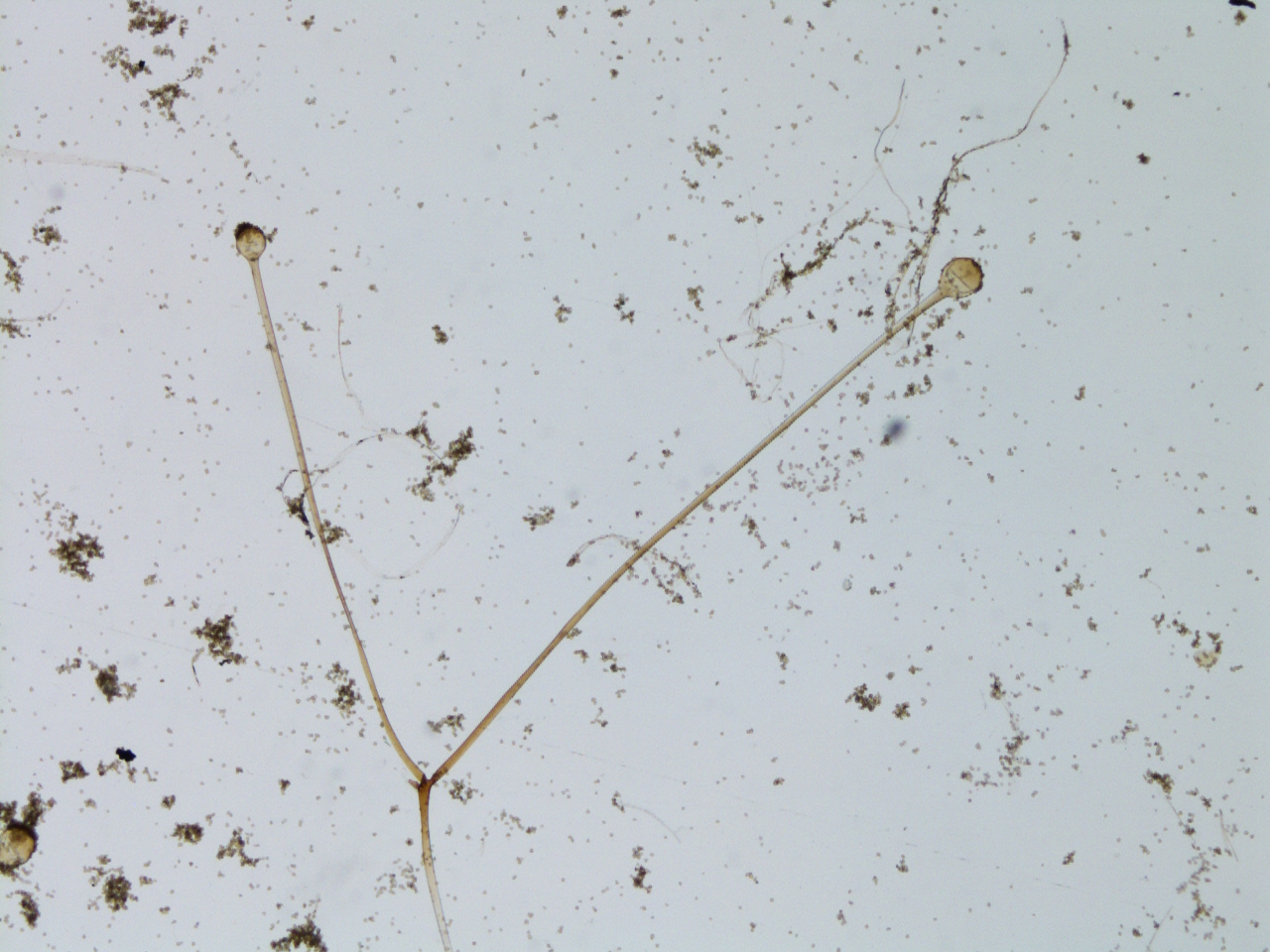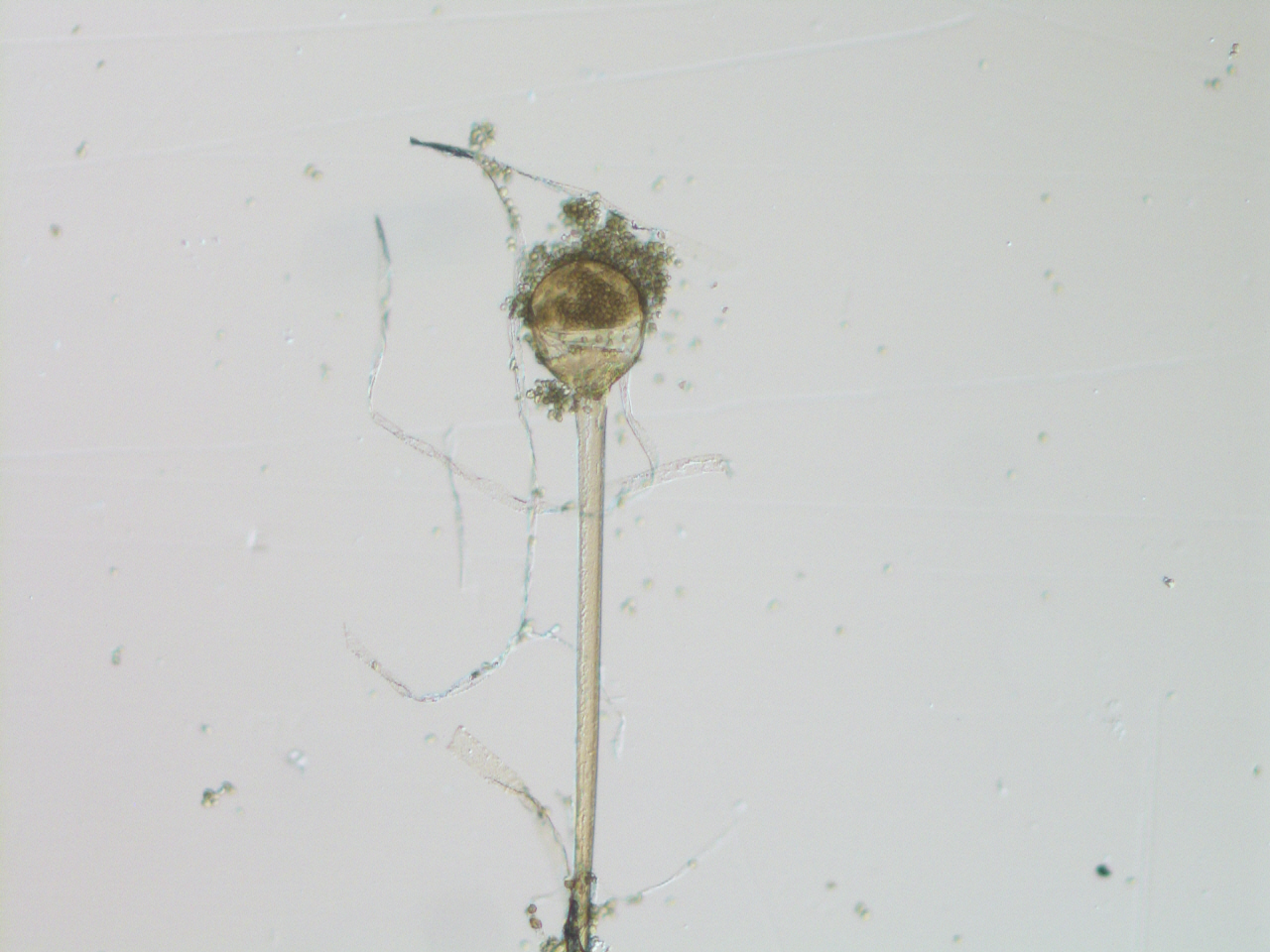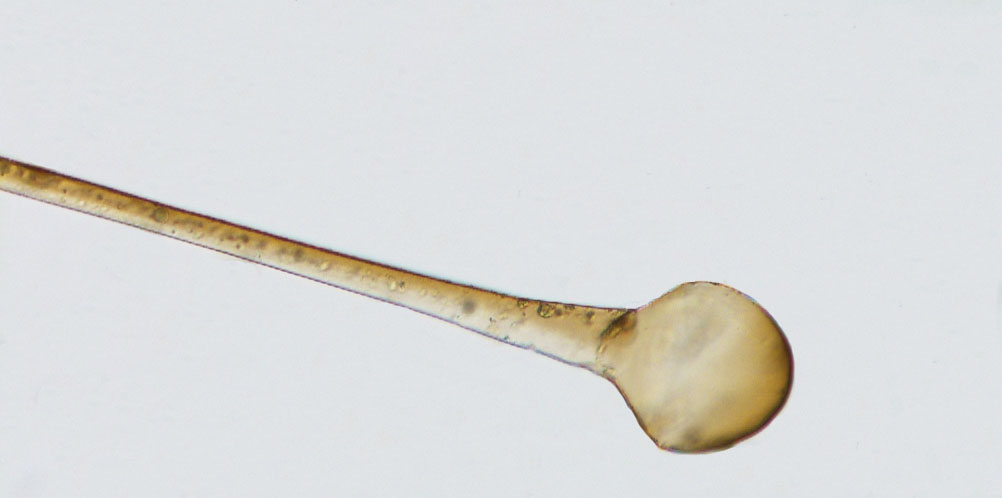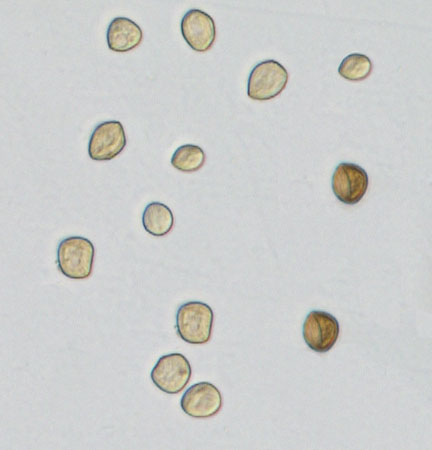- Proposed
- 2Under Assessment
- 3Preliminary Assessed
- 4Assessed
- 5Published
Rhizopus stolonifer (Ehrenb.) Vuill.
- Scientific name
- Rhizopus stolonifer
- Author
- (Ehrenb.) Vuill.
- Common names
- IUCN Specialist Group
 Chytrid, Zygomycete, Downy Mildew and Slime Mould
Chytrid, Zygomycete, Downy Mildew and Slime Mould- Kingdom
- Fungi
- Phylum
- Zygomycota
- Class
- Incertae sedis
- Order
- Mucorales
- Family
- Rhizopodaceae
- Assessment status
- Proposed
- Proposed by
- Leslie Freitas
- Comments etc.
- Leslie Freitas, André Santiago
Assessment Notes
Taxonomic notes
Rhizopus stolonifer is characterized by producing long sporangiophores (up to 3-4 mm long) that commomly arises from stolons with opposite and strongly branched rhizoids. Multisporous sporangia are frequently over 100 μm diam, with a discrete apophysis, and mostly deliquescing in water, leaving no collar. Sporangiosores are ovoid, subglobose, some irregular (angulate), distinctly striate. Giand cells are absent. Zygoporangia are usually black and with ornate wall (Zheng et al 2007). It belongs to the sub-kingdom Mucoromyceta, phylum Mucoromycota, family Rhizopodaceae, order Mucorales (Tedersoo et al. 2018).
Why suggested for a Global Red List Assessment?
There are several records worldwide of this species. I suggest it as Least Concern (LC).
Geographic range
The species in known in 18 countries. In Brazil, it is know in 4 of the 26 states.
Population and Trends
This species has a worldwide distribution. here are about 74 records of this species in GBIF, and 132 in PlutoF.
Population Trend: Improving
Habitat and Ecology
Reported on soil, herbivore dung, fruits, flowers and decaying root.
Threats
In Brazil, this species is moslty recorded in the Atlantic Forest, a hotspot with some reports in Cerrado em Caatinga domains.
Conservation Actions
Research needed
The species, even occurring in all biomes, has a fragmented distribution in Brazil. Studies about its population distribution are needed.
Use and Trade
Use in the production of enzymes used in biotechnological processes. Production of fermented foods.
Bibliography
Country occurrence
Regional Population and Trends
| Country | Trend | Redlisted |
|---|



